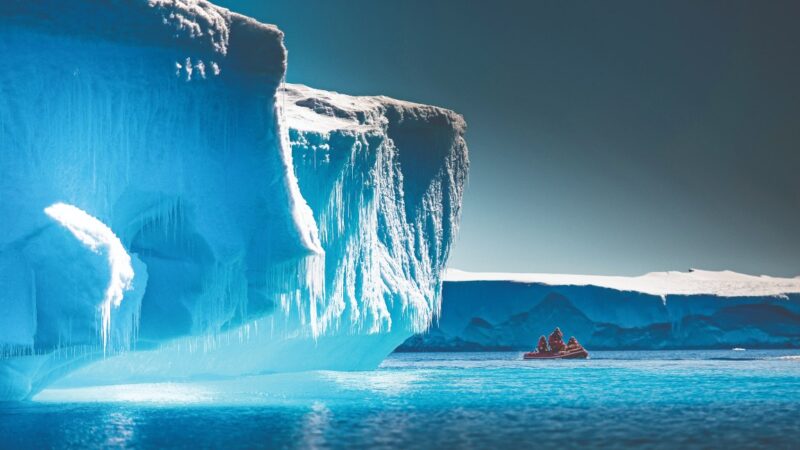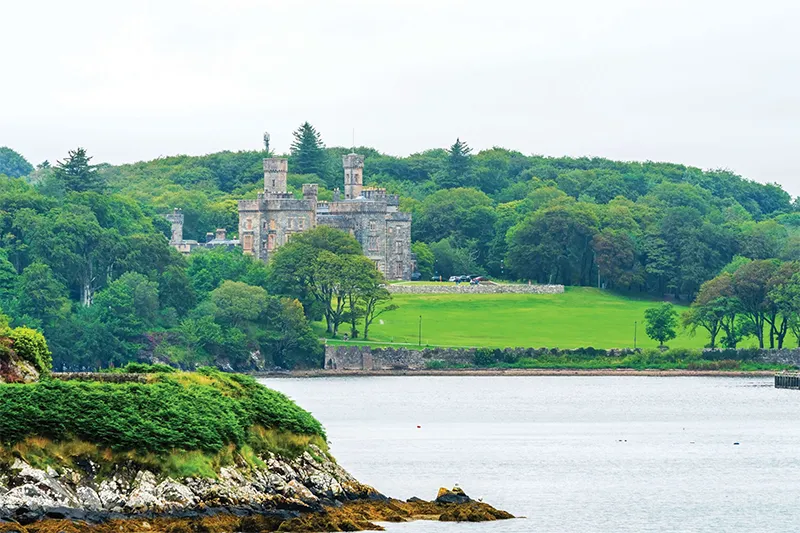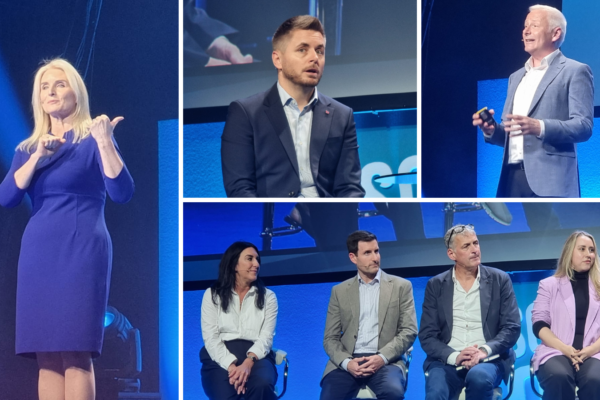Expedition cruising roundtable: Investigating the evolution of the sector
Expedition cruising is one of the fastest-growing segments of the cruise industry, but how is it evolving and what does the future hold?
Cruise Trade News’ Kaye Holland caught up with AE Expeditions senior business development manager, Andy Tait; Silversea sales director Connie Georgiou; Seabourn senior marketing manager Carly Perkins; Swan Hellenic sales director Luke Clarke; Quark Expeditions UK business development manager, Sarah Schlederer; Hapag-Lloyd Cruises sales representative Aishling McLoughlin; and CLIA UK & Ireland managing director, Andy Harmer, to discuss all things expedition cruising in 2023.
Demand since the pandemic
Expedition cruising is on the rise and is a trend that is clearly here to stay. How do you account for the surge in popularity?
Carly Perkins, Seabourn: Seabourn is fairly new in the expedition market – we launched our first ship, Seabourn Venture, last summer – and our second expedition ship, Seabourn Pursuit, will launch this summer.
We’ve been offering expedition-type cruises – but only in Antarctica – since 2012 and they proved so popular that we decided to create a purpose-built expedition ship.
I think, after the last few years we’ve all had, people are after once-in-a-lifetime bucket list trips. Seabourn Venture and Pursuit are attracting not only traditional Seabourn guests but people who wouldn’t normally consider a cruise.
Aishling McLoughlin, Hapag-Lloyd Cruises: The pandemic definitely had an effect – people were cooped up for so long and weren’t spending so they definitely had more budget and wanted to make up for lost time.
Also, I think passengers are becoming more aware of expedition cruising as agents are promoting it more. And that is, in part, thanks to the events that CLIA is putting on which are helping get agents onside.
Andy Tait, AE Expeditions: I also think that the pandemic has played an important part. Clients have the money but they are now saying, ‘we don’t know what will happen next year so let’s go for it’. They aren’t holding off.
Luke Clarke, Swan Hellenic: For me, it’s all about experiential travel – that’s grown and expedition cruising has grown with it.
That’s perhaps partly because the expedition cruise sector has made everything easier – we charter flights, include hotels, and so on.
Sarah Schlederer, Quark Expeditions: I’d put it down to the diversity of experiences and ships that expedition cruise lines, including ourselves, now offer.
At Quark, we have operated in the polar regions for 32 years. We used to be much more rustic and about adventure but now we offer ultra-luxurious ships – and everything in between – so we have opened the sector up to a wider audience.
Andy Harmer, CLIA UK & Ireland MD: Travel agents need to have the confidence to offer their customers an expedition cruise – it’s not a cheap purchase and it’s an investment of customers’ time too.
I think that their confidence has grown thanks to the work done by cruise lines and CLIA – and also the media who are covering expedition cruising more and thereby raising awareness.

A changing customer base
Due to the high price tag, people often think of expedition cruising as the preserve of the retired or semi-retired who have the time and resources. I’m curious as to whether the demographic profile is changing?
Luke Clarke: Different price points attract different age ranges. We are obviously at the higher end so attract the over 55s – someone my age certainly couldn’t afford to do it. Price dictates the age – the more expensive the cruise, naturally it’s a case of the older the client.
Andy Tait: [Expedition cruising] still skewers older particularly for the Arctic but we’re finding that Antarctica is attracting a lower age – think honeymooners who are often wanting a wedding ceremony of some sort on the ship too.
Aishling McLoughlin: Because of the cost and also the time involved, I would say that expedition cruising still tends to attract an older clientele. That being said, people in their late 40s and 50s – which is still young and not your typical expedition cruise age – are on board too.
Carly Perkins: We haven’t yet had a year of expedition cruising under our belt but so far we have attracted traditional Seabourn guests who have chosen to come on board to see and experience our brand-new ship.
We take delivery of Seabourn Pursuit this summer and next summer she will be sailing down to the Kimberleys, offering very active, 10-night cruises so it will be interesting to see whether that attracts a younger demographic.
I think the age range will vary according to the destination.
Sarah Schlederer: We spent 2020 looking at our demographic and an expedition traveller is absolutely anyone and everyone. We split it into categories.
Firstly, you have the learners; the more mature, traditional age bracket. Secondly, there are the bucket listers who want to reach a certain number of countries by a certain age.
Then there are the escapists – this category skews more male and they tend to have a high income and want to get away from work, switch off and have an adventure. So the point is that an expedition traveller could be everyone and anyone.
Connie Georgiou: At Silversea, we’re finding that more and more families are booking an expedition cruise. It’s about all making memories together. Selling an expedition cruise to a family is such great business.
Andy Harmer: I’ll echo what Connie said. An expedition can look more expensive than other holiday options, but when you look at the value, what’s included, and where you are going and break it all down – look at what it costs to stay in a London hotel for one night. Travel agents need to be confident when selling.
The evolution of expedition cruises
Expedition cruises were typically seen as adventure-focused – their main purpose was exploring the destination. But now we are starting to see more and more luxury ships join the sector….
Andy Tait: We are casual luxury so we don’t have the same finesse as say Seabourn and Silversea do. You don’t have to dress up for dinner on one of our ships but it’s still a three-course affair.
Connie Georgiou: People typically come back on board, have a glass of champagne, go and have a shower, eat dinner and then head to bed because the days are very active so they are exhausted. But that doesn’t mean the food isn’t fabulous – it is. Who doesn’t want to get back to a gorgeous ship?
Luke Clarke: For years, we were almost shamed into talking about luxury. Hard-core expedition companies used to look down on us – it used to be that adventure and luxury couldn’t go hand in hand. But now everyone is building luxury ships and trying to come up and in line.
Carly Perkins: We have only just ventured into expedition cruising but Venture had to be ultra-luxury because Seabourn is ultra-luxury.
That being said, we don’t have a partnership with Tomas Keller as we do on ocean ships and we don’t have a show lounge because this isn’t what expedition guests are looking for.
Sarah Schlederer: Yes, the focus is always still on the destination so on-board activities will get shuffled around. If there is a polar bear spotting, then lunch is put on pause. If you’ve booked a spa appointment and a pod of whales appears, no problem. Go out and have your spa appointment later.

Environmental and cultural impact
Although smaller in scale, expedition cruises have faced criticism for polluting oceans. Is there anything you are doing to combat this?
Andy Harmer: It is in everyone’s interest to protect the destinations we are visiting.
And if you start creating a list of everything cruise lines do in this area, we do a huge amount of work in protecting destinations and looking after the communities and wildlife.
Cruise is very much leading the way – things like having the connectivity to plug into ports, they are already on most cruise ships.
Carly Perkins: Because Venture is only a year old, we have the benefit of the latest technology, for example she never has to drop anchor.
Sarah Schlederer: Here at Quark, we also put an emphasis on the cultural sustainability of communities we visit in the Arctic.
These communities are heavily dependent on tourism but, of course, we are bound by the weather. Quark pays these communities regardless of whether or not the weather allows us to visit. There is so much cruise lines do that doesn’t get talked about.








